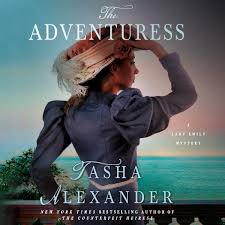Visible Plot Goal Gets a Twist
I discussed in the last post the need for you to establish your protagonist’s visible plot goal in the first scene and preferably in the first few pages of your novel. But I want you to think about a twist or kink in the goal. A very common, standard plot device in many novels and in many great movies you see involve a shift in the protagonist’s plot goal near the start of the story. This may seem confusing but let me explain.
You want to show your protagonist in her ordinary world in some way at the start (but don’t keep her there too long). Dorothy, in The Wizard of Oz, hates living in Kansas, where life is the pits. Even the film is gray and dingy, making the viewer really commiserate with her when she sings “Somewhere over the Rainbow.” What’s Dorothy’s immediate visible goal? Why, to run away to someplace better, someplace safe for her and Toto. But what happens? Not too long after the story begins, an incident occurs that shifts Dorothy from her original goal and sets her on another path toward a different goal—the goal that’s much more important to her emotionally and spiritually. Ah, this is the real visible goal of the story, but it got thrust upon the heroine on her way somewhere else. Like Bugs Bunny always said, “I must have taken a left turn at Albuquerque.” Yes, your hero will get waylaid early on and be forced to take a new direction, and that will introduce the visible plot goal to be reached by the end of the story.
The Real Visible Goal
Think about Shrek. All he wants at the start of the story is to get rid of the annoying fairy tale creatures who are invading his swamp. So he journeys to the center of the kingdom to complain to Lord Farquaad (who came up with that spelling?). But something happens that throws Shrek in a new direction. Sure, the ruler will grant his wish BUT only if he goes to rescue Fiona and bring her back. And thus begins Shrek’s journey to his visible goal—which also involves his true inner journey to find his true self (much more on that later! For it’s important!).
Think about Maria in The Sound of Music. Her initial goal at the convent is to figure out where she fits in and to leave the convent and get a job. She can’t cut it as a nun, and the nuns consider her a problem (I’m humming “How Do You Solve a Problem Like Maria?”). But something happens when she becomes a nanny to all those crazy kids. Her visible goal then shifts to want to become a mother to them and find love by marrying the brooding dad, although she thinks her goal is impossible.
No doubt you can come up with a dozen movies and novels in which the hero or heroine starts off wanting one thing but then gets pushed through a door where their visible goal changes. You don’t have to write every novel like this, but I wanted to give you some things to consider. There is nothing wrong with introducing your protagonist in the first scene with a visible goal that will stick until the end. Frodo is happy sitting around at Bag End in Hobbiton until Gandalf sends him off to Rivendell with the ring. Yet, you could argue that when he gets to Elrond’s lovely home, his plot goal gets a twist when he realizes he is the best person (hobbit?) to take on the task of destroying the ring. That plot twist happens quite late in the book–in fact, at the end of book one, but all the same, Frodo’s plot goal does get a twist that veers him off in the direction needed for him to also reach his spiritual and emotional goals for the story (more on that in later posts). Your inciting (triggering) incident in the first scene can send your protagonist on her way toward one set goal. But you can also present the goal this way, with a turn at Albuquerque. Both work.
All Roads Lead to Rome (or Home?)
See, the reason for establishing this visible goal right at the start is it acts as a focusing lens. All roads (scenes) lead to Rome (the goal). So as you write your novel, you will keep this goal in view, and set every obstacle you can to prevent your hero from reaching that goal. It sounds formulaic and simple, but all great novels will basically have these elements ingrained in them. Why? Because they are intrinsic to story-telling and they resonate within us as true story patterns. Of course, you can do what you want and veer off the tried-and-proven path. And you may come up with a kicker novel. Some have. But don’t knock the path of proven success until you try it. You’ve heard there are no new plot ideas out there, and every story is just a version of ten or so basic plots (or thirty-six dramatic situations, if you go with Georges Polti’s view—get his book The Thirty-Six Dramatic Situations first published in 1921 but reprinted in 1981, if you can find a copy).
This week, play with your first scenes and think about whether to have your main visible goal be introduced from the start or use an inciting incident to throw your protagonist off course and shift him from his initial goal to the real goal of his heart. But keep in mind that the true plot goal is the one your hero will go after until the end of the book, where he will either succeed or fail. That decision is up to you and will be determined by your message or theme (which you should now have figured out. See my post on themes). Happy writing, and be sure to post your thoughts and comments.












Great post! I’m so with you on this. Conflict sans a goal(s) feels barren, to me. I like the twist, especially. Do you think that the “twist” has become almost obligatory? After reading your post, I wracked my brain trying to think of a story I REALLY liked that didn’t have @ least one & I came up empty.
After a little more reflection, I gravitated on the notion that it is often the “twist” that catalyzes the growth that enriches the protagonist’s understanding of self. “Life’s what happens while you’re making other plans,” so to speak. What think?
Best,
Dirk
I’ve been trying to think of novels without the twist. I’m sure there are some so if I think of any, I’ll let you know! It is the norm to use one, especially in movies. It’s as if the inciting incident veers the hero off in the direction of a new plot goal.
Once again, you deliver high quality advice designed to strengthen our WIPs. While I intuitively had the basics of such devices (initial visible goal, inciting incident that gives the plot a twist leading to newly visible goal for the rest of the book) incorporated into my storyline, I can definitely see that I need to make them much more definitive. Thanks for helping to bring clarity to both my thinking and planning for my storyline.
newer reader here, and just wanted to let you know that you’re really helping me w/ my first stab at a fiction novel. love the posts, especially ones pertaining to visible goals, layering, etc…
i’ve written quite a bit of creative non-fiction, but am a total newbie at fiction. still, i have confidence that i can do this! especially now that i’ve found your blog to help guide me!
thank you!
You’re welcome! Feel free to join in with comments on what you’re learning and working on.
don’t worry. i’ll be chiming in. possibly even enlisting your help via a critique at some point.
Thanks so much for your thoughts!
I agree, you’d think there would be a couple good ones out whose compelling drive does not rely on a twist…but I’m still reflecting, too.
Might it be a story in whose conflict is so dramatic and engaging that a linear progression does not detract? It would seem a strong character with near-insurmountable challenges might do it…but often the solution(s) become the twist(s). ??
Best,
Dirk
Thank you, thank you. I have been wracking my brain about how to finish my novel. I knew the protagonist needed to grow and change but couldn’t figure out how or what.
Your post put me on track. I immediately knew what had to be done. Now the only problem is to write it well.
Thanks again,
Irene
Thanks again for some great advice! My wheels are spinning…
Thanks so much for these posts! Just stumbled on this series and I can’t believe the good luck of being able to read through them without waiting for the next installment.
Quick question about this twist. Is this what other people call the First Plot Point? Within a 3 act structure is this what propels us into the 2nd act?
I suppose in many instances this twist could be the first plot point. I’m not a real stickler for positioning the plot points exactly the way some teachers say. But in general, whatever incident shifts the main character into the direction of the ultimate goal would be the first plot point. Some plots, though, don’t have that twist and just have a series of developments, complications, or the like that propel the character forward.